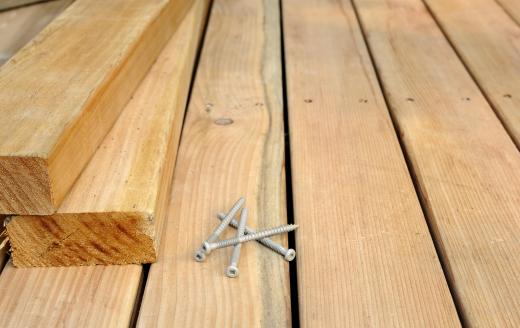Trucks often load and unload goods at a loading dock, which is an elevated entryway that lines up with the floor of the truck's bed. When a truck backs up to the dock, it is likely that hard contact will be made between the truck and the dock itself, potentially leading to dock damage as well as truck damage. To prevent such contact and subsequent damage, a dock bumper is installed at the bottom lip of the loading dock. This dock bumper is usually made of plastic or rubber mounted to a metal frame to absorb the shock of contact between the truck and dock.
The specific design of the dock bumper can vary, though in many cases, individual slats of rubber are mounted side by side to create a solid absorption structure. The rubber slats are compressed together in a metal frame to ensure they do not loosen or bend, and the metal frame is mounted to the concrete of the loading dock using lag bolts or other heavy securing devices. The dock bumper usually runs the entire length of the loading dock, and it may even extend partially up the sides of the dock opening as well, depending on the orientation of the dock in relation to the truck.

Other styles of dock bumper products may feature molded rubber that is cast in specific shapes. L-shaped bumpers are common, as they can be mounted at the corners of the loading dock opening. Square bumpers can be mounted along the bottom of the loading dock as well, or on the sides. These tend to be lower profile than bumpers made from slats of rubber, though they can be just as effective and durable.
The truck itself may also feature a dock bumper or set of dock bumpers made of metal. These bumpers are designed to protect the truck only, and they can cause damage to the loading dock when contact is made. The bumpers mounted on the truck are designed to line up with loading docks of various heights, and to keep the back gate or bed of the truck from being damaged by contact with the dock.
Boat docks also use dock bumpers to protect the hulls of boats when they come into a slip or dock. These bumpers are usually made of rubber as well, since rubber tends to resist damage from water and in some cases even direct sunlight. The bumpers are tied to the dock, and they come in contact with the ship's hull as it sidles up next to the dock.
